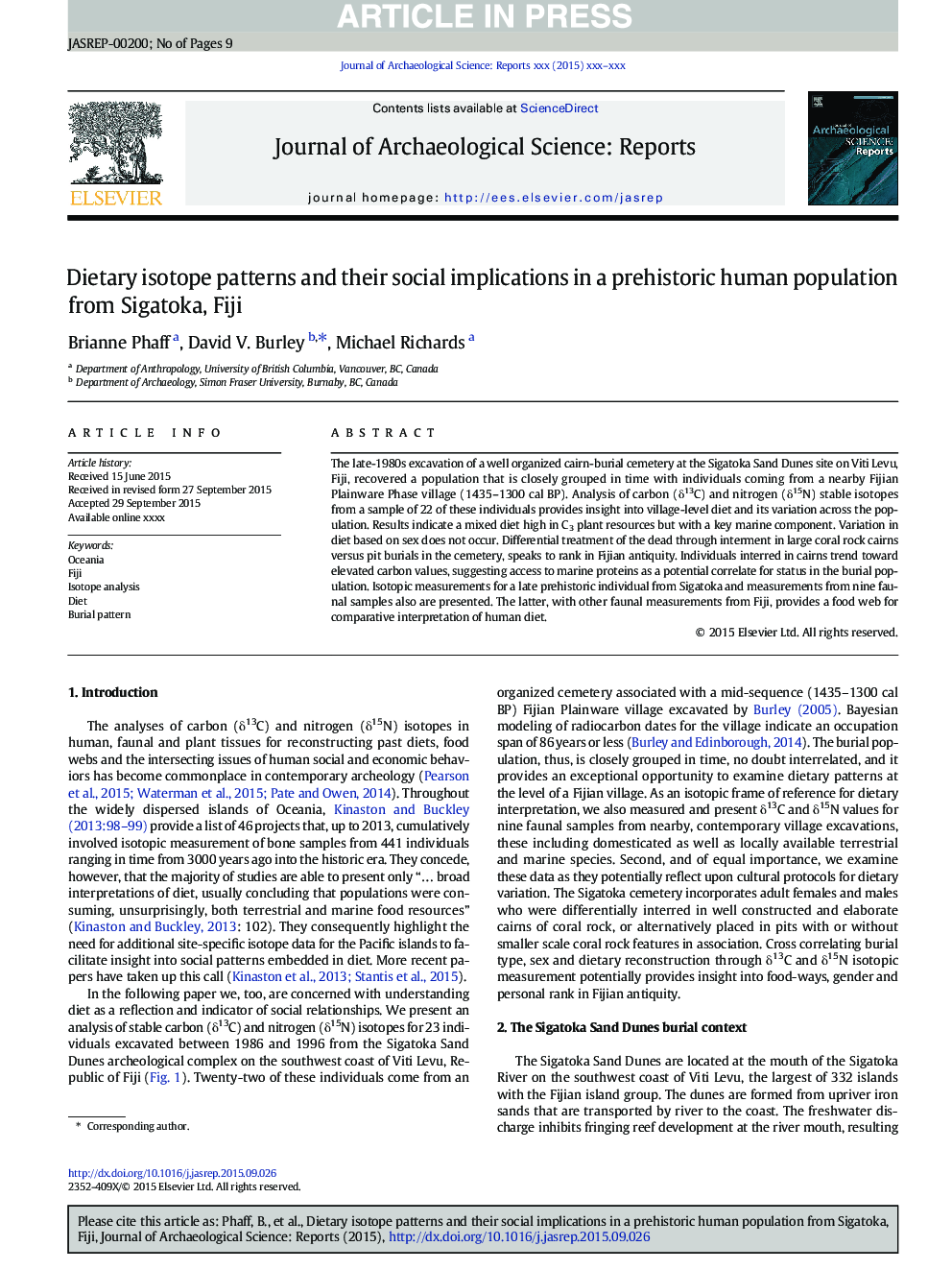| Article ID | Journal | Published Year | Pages | File Type |
|---|---|---|---|---|
| 7445687 | Journal of Archaeological Science: Reports | 2016 | 9 Pages |
Abstract
The late-1980s excavation of a well organized cairn-burial cemetery at the Sigatoka Sand Dunes site on Viti Levu, Fiji, recovered a population that is closely grouped in time with individuals coming from a nearby Fijian Plainware Phase village (1435-1300 cal BP). Analysis of carbon (δ13C) and nitrogen (δ15N) stable isotopes from a sample of 22 of these individuals provides insight into village-level diet and its variation across the population. Results indicate a mixed diet high in C3 plant resources but with a key marine component. Variation in diet based on sex does not occur. Differential treatment of the dead through interment in large coral rock cairns versus pit burials in the cemetery, speaks to rank in Fijian antiquity. Individuals interred in cairns trend toward elevated carbon values, suggesting access to marine proteins as a potential correlate for status in the burial population. Isotopic measurements for a late prehistoric individual from Sigatoka and measurements from nine faunal samples also are presented. The latter, with other faunal measurements from Fiji, provides a food web for comparative interpretation of human diet.
Keywords
Related Topics
Social Sciences and Humanities
Arts and Humanities
History
Authors
Brianne Phaff, David V. Burley, Michael Richards,
